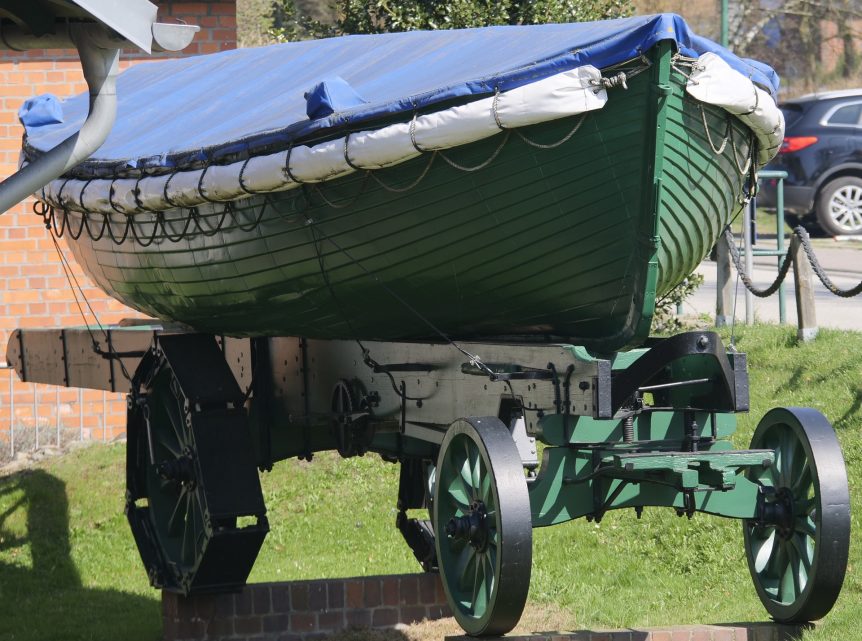Painting a boat comes with many challenges.
One of these challenges is managing the boat’s weight, which is mostly a problem when painting the bottom.
So, how do you overcome these challenges? Well, the answer is not as simple as one might think. To keep the process as simple and quick as possible, a guide to how to bottom paint a boat on a trailer is provided below.
How To Paint The Bottom Of A Boat On A Trailer
When you decide to paint the bottom of your boat, you will need to make preparations to relocate it to dry land.
It is likely that you already own a trailer. If so, the process will not be that difficult. For larger boats, it may require the assistance of a shipyard crew and heavy machinery to complete the move.
The idea is to relocate the boat to dry land as safely as possible. Once the boat is relocated to dry land, it will be time preparing it for a fresh coat of paint.

Tips For Painting A Boat
If your boat is small, it may be a good idea to turn it upside down. Be sure to remove the motor before attempting this process just to be on the safe side. This will not be an option for larger vessels on trailers. Since you will not have full access to the bottom of the boat, you will need to work in sections.
With that said, it is crucial that each step of the process is completely finished before moving to the next step. This is because it would not make sense to prepare and paint only the exposed areas because it would be like repeating the process twice.
Keep in mind that if your painting an aluminium boat then the process may be a little bit different due to the material of the boat. If this is the case then I recommend you checkout my guide on How To Paint an Aluminium Boat.
Start With A Thorough Cleaning
To clean the boat, a brush with stiff bristles is a necessity.
Since the boat is sitting on a trailer, the best option would be a power washer. The machine will make it easier to access those hard-to-reach areas, whereas the brush would not.
While soap is not needed for this process, it is okay to utilize it. Before the task will be considered complete, a thorough rinsing will be required.
I have a guide which goes into detail on how to clean your boat. You can view this guide by clicking here. I’d definitely recommend it if you want to wash your boat effectively.
Access Unexposed Areas
To access the areas that are hidden between the bottom of the boat and trailer, you will need a jack. To protect the bottom from damage, you can cover the jack with wax paper. The wax paper will prevent damage to areas that have already been primed and painted.
Remove Wax Overcoat
Some manufacturers utilize an overcoat of a wax sealant to add a layer of durability to the bottom of their boats.
If your boat happens to have a wax sealant in place, you will need to remove it. Utilizing a dewaxer will help speed up the process.
I’d recommend this dewaxer from Amazon.
The dewaxer will not only remove the wax sealant but also remove any oil or algae leftover from the cleaning. A dewaxer can also help to ensure paint adhere better to the surface. Be sure to utilize the jack to remove the wax from all the unexposed areas.
Strip Away Old Paint
To protect the area underneath and around the boat, it is recommended to put down a tarp. This will also help ensure quick and easy cleanup.
A paint stripper, scrapper and brush will be required for this task.
Apply a thick layer of paint stripper to the entire bottom of the boat. Wait about 15 minutes before scrapping. This will allow the chemicals in the paint stripper to penetrate deep into the old paint.
Utilize the scrapper to remove the old paint. If you do not want to strip away the paint by hand, you can always invest in a power blaster. This machine will remove the old paint with little to no physical labor involved.
If you are manually removing the paint, you will need to utilize the jack to access the unexposed areas. A power blaster should be able to access these areas without too much difficulty.
Sanding
Once all of the old paint chips have been removed, it will be time to start sanding.
Coarse sandpaper will be required for this process. Most experts recommend utilizing 80-grit to achieve that much desirable frosty appearance. Be sure to sand the unexposed areas as well. This will eliminate the need to repeat the process later.
Priming
The next step is to prime the bottom. You will need a marine-grade primer and paint brush and roller for this project.
Once the primer completely dries, it will be time to sand it down. You can utilize a fine-grit sandpaper or electric sander. And, do not forget about the unexposed areas because you will want to prime them now as well.
Painting
The final step of the process is painting. It is recommended to utilize antifouling paint for this project. This type of paint can prevent the growth of algae and barnacles.
Antifouling paint is available in three types, including hybrid, hard bottom and ablative. Each antifouling paint offers unique benefits and more suitable for specific types of boats. For example, ablative antifouling paint is more suitable for pontoon and fishing boats.
The major benefit of ablative paint is it gradually wears away over time. So, it will never need to be stripped away the next time the boat is painted.
Summary
Having the right tools and supplies on hand can make a world of difference when painting the bottom of a boat. Utilizing a jack to access the areas hidden between the bottom of the boat and trailer in each step will keep the entire process as simple and quick as possible.

My name Is Larry Noel, the voice behind BoatCrunch.
I’m a boating enthusiast that loves nothing more than being out on the water. So much so that I’ve acquired a Degree in Marine Biology (MB) as well as a degree in Ocean Engineering (OE).
I’m very familiar with a wide range of different boats and I’ve owned a variety of different boats myself however I have a particular obsession with Pontoon boats. I’ve lived all across the United States and always kept company in the form of boats and now my loving family.


